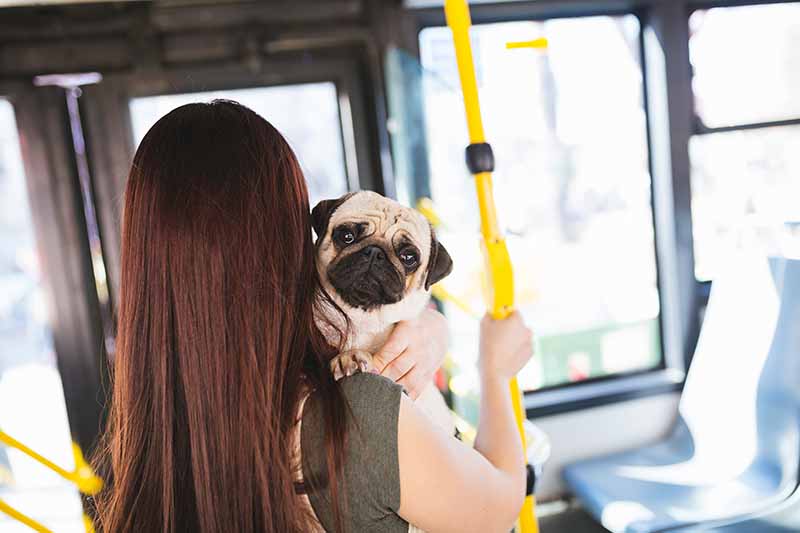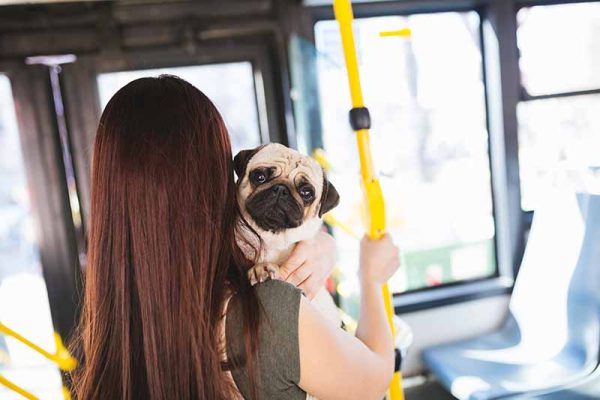More and more people are living in cities these days, and that has led to a difference in the most popular dog breeds. For instance, Frenchies beat Labrador Retrievers in 2022 as the most popular dog breed. In 2012, the French Bulldog was ranked at number 14. It quickly beat out other dog breeds largely because it is great for apartment living—something that is becoming more and more common.
Of course, this isn’t the only dog breed that’s good for city living, though. There are several other options you can choose from, too. Below, we’ll list some of the best dogs for city living.

What Makes a Dog Breed Good for City Living?
There are many factors that make a dog good (or not so good) for city living. Apartment space is limited, so smaller breeds are often a better option. City dwellers often don’t have backyards, either, so dogs that don’t require much exercise are best. Adaptability and a low barking tendency are also recommended, though these traits aren’t absolutely necessary.
Some people also prefer dogs with a higher amount of trainability. Well-trained dogs are easier to manage in a busy environment when there may be tons of distractions everywhere. Low grooming needs are also recommended, but this isn’t absolutely required.
The 19 Best Dog Breeds for City Living
1. French Bulldogs
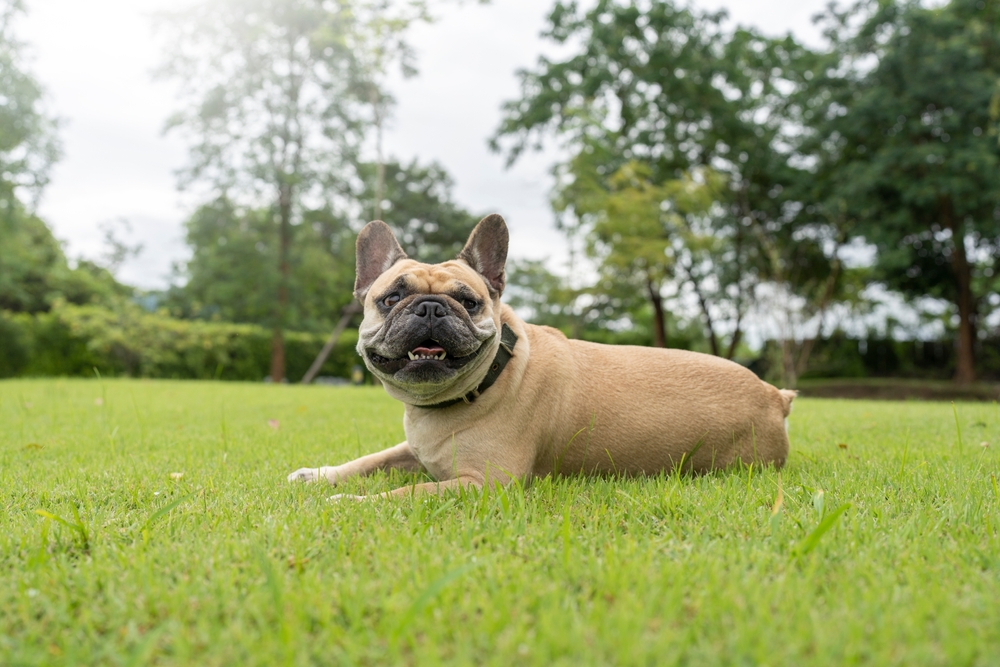
| Origin: | France |
| Lifespan: | 10–12 years |
| Height: | 11–13 inches |
French Bulldogs have recently become exceedingly popular in cities for several reasons. They have very mellow personalities and low exercise needs, making them perfect for many city dwellers. They’re also pretty quiet and content, with only a short walk.
However, these dogs can also be exceedingly expensive. They’re also prone to many health issues.
2. Bichon Frise
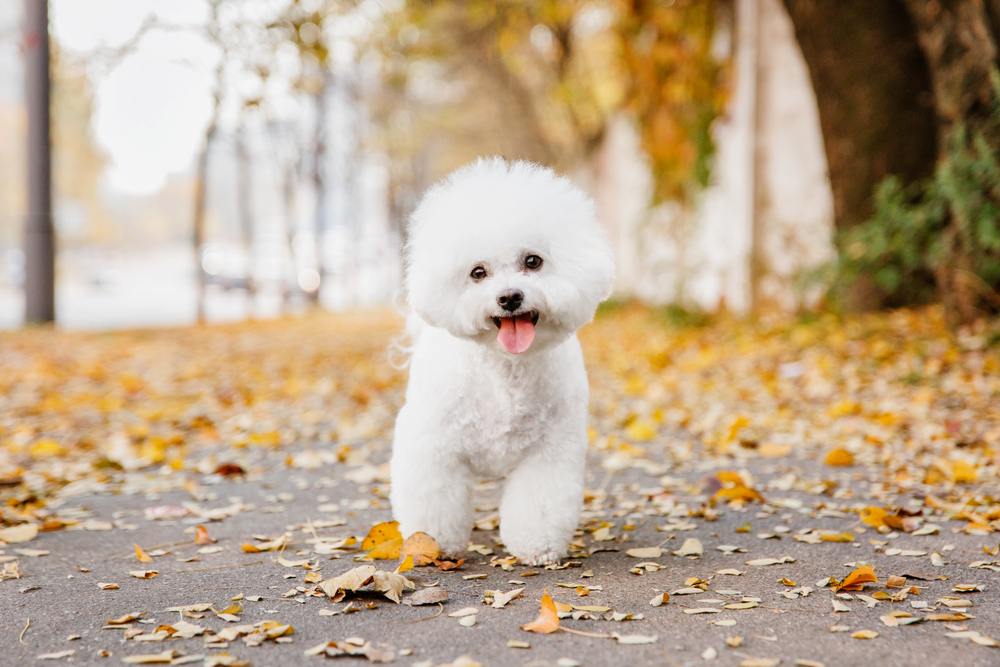
| Origin: | Tenerife |
| Lifespan: | 12–15 years |
| Height: | 9.5–12 inches |
The Bichon Frise is a happy, adaptable breed that tends to do well in apartments, too. They don’t shed much, though they do need regular grooming. They’re great for those who are sensitive to pet fur. Plus, they’re easy to train, which is more than we can say for many other small dogs.
These dogs are a bit more athletic than others, but their smaller size makes them pretty easy to deal with.
3. Cavalier King Charles Spaniel
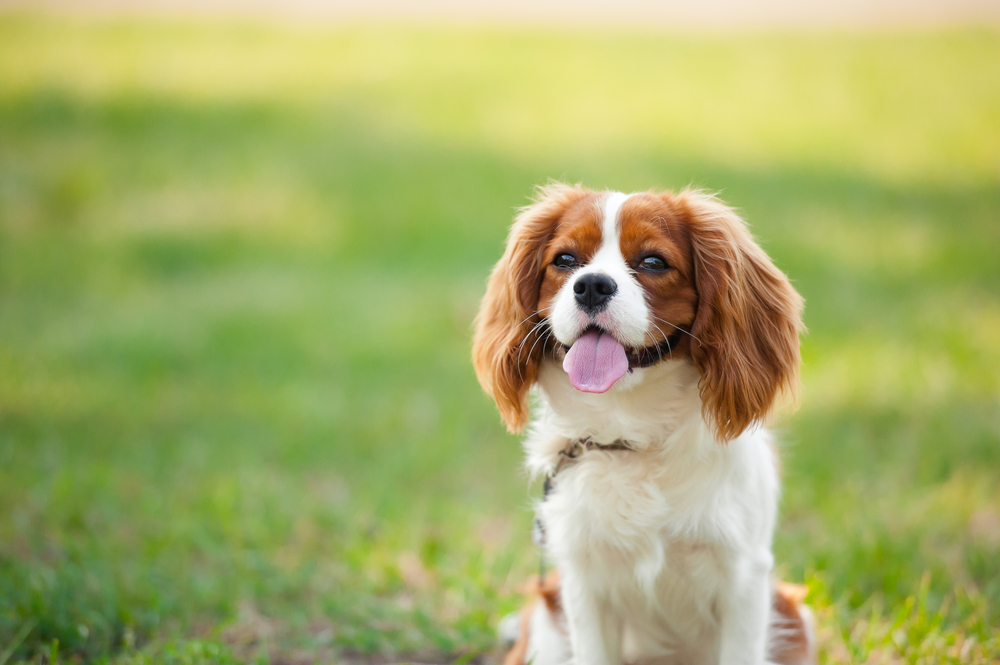
| Origin: | United Kingdom |
| Lifespan: | 12–14 years |
| Height: | 12–13 inches |
Cavalier King Charles Spaniels are easily overlooked dogs, but they do well in cities. They’re affectionate and bond closely with their families. They’re relatively inactive indoors, but they do enjoy walking. These dogs are exceptionally laidback and gentle, making them great for children.
Despite their looks, they don’t require much grooming, either.
4. Boston Terrier
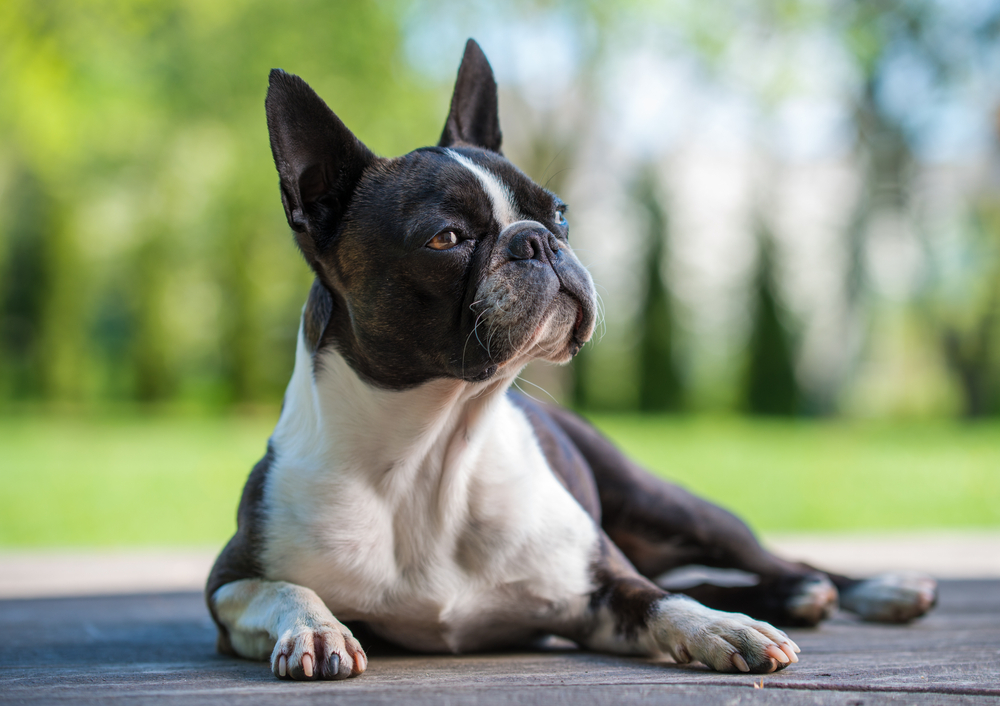
| Origin: | United States |
| Lifespan: | 11–13 years |
| Height: | 15–17 inches |
Boston Terriers have waned in popularity a bit over the years. However, they’re still easy to find and relatively popular in cities. They are very intelligent and easy to train, though they can go through stubborn phases. Their playful, clownish nature is well-loved by many, and they don’t need extensive exercise.
Plus, they’re very easygoing and adaptable.
5. Pug

| Origin: | China |
| Lifespan: | 13–15 years |
| Height: | 10–13 inches |
Pugs are comical characters, but they’re also very loving. They require very little exercise, largely due to their shortened snout, which makes breathing a challenge. They also don’t bark excessively and tend to be very quiet.
However, they are also very unhealthy, which is one reason they’re becoming less and less popular.
6. Shih Tzu
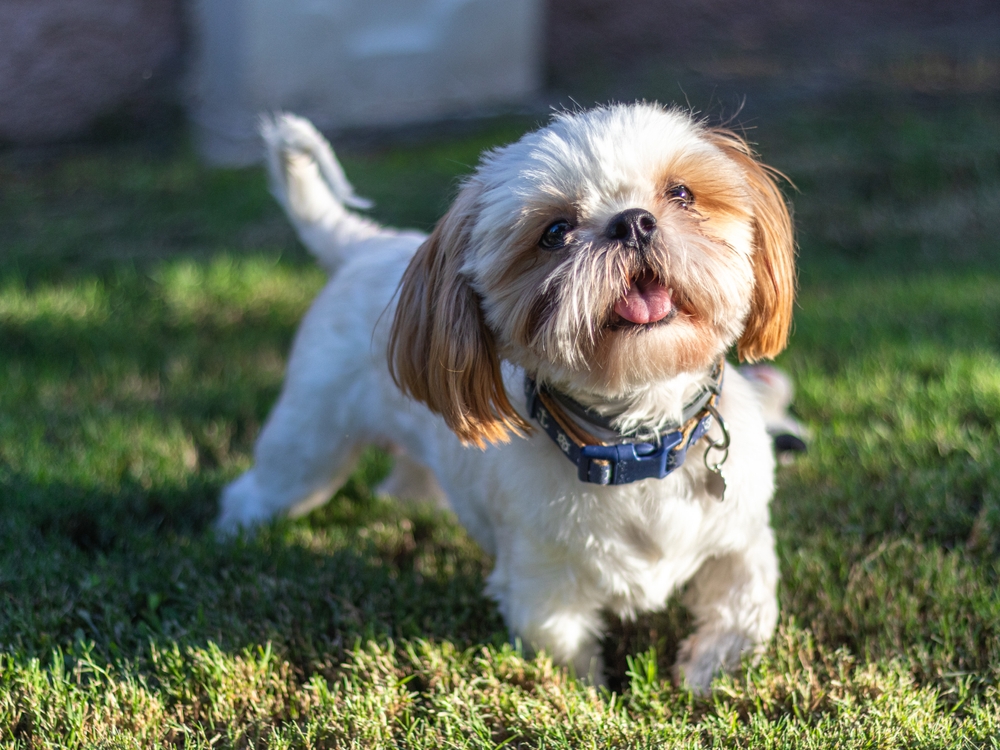
| Origin: | China |
| Lifespan: | 9–16 years |
| Height: | 8–10 inches |
Shih Tzus has been pretty popular for many years. They have long, flowing hair that needs tons of grooming, but they don’t shed much. They’re pretty adaptable and low-energy, though most still need walks and playtime.
If you decide to adopt this breed, ensure you purchase from a quality breeder. They can be prone to health issues.
7. Brussels Griffon
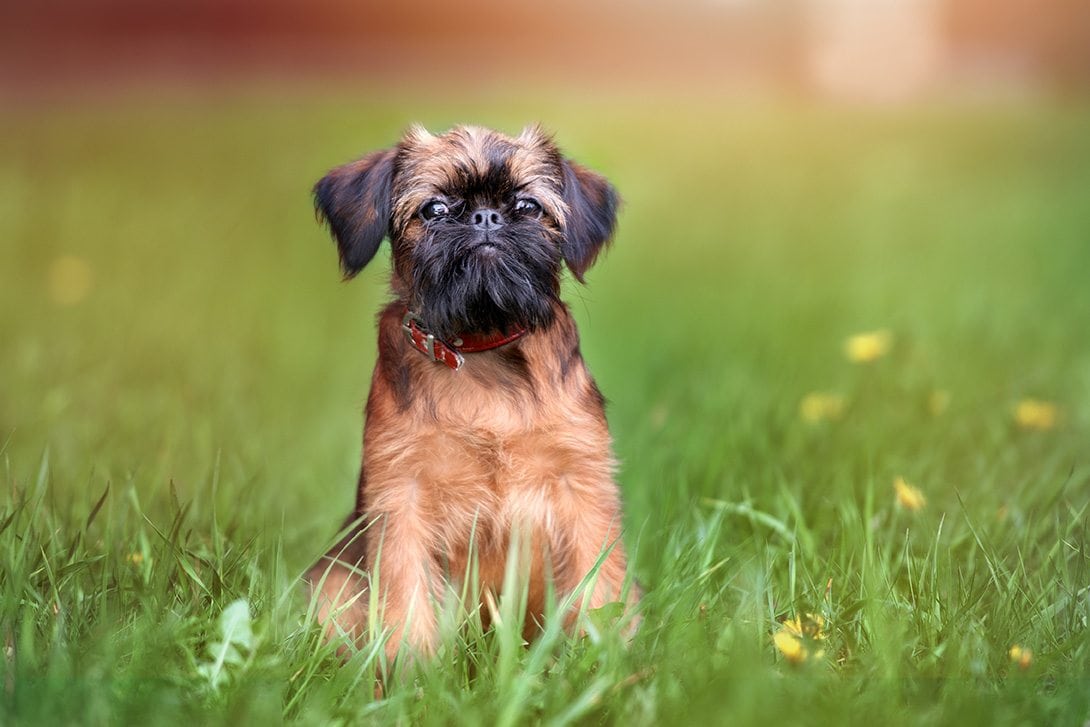
| Origin: | Belgium |
| Lifespan: | 12–15 years |
| Height: | 7.5–10 inches |
These dogs are interesting-looking, which is one reason many people love them. They’re small, but they’re also full of personality. Plus, they’re very low-maintenance and content with indoor playtime. They’re one of the few breeds you don’t have to take on tons of walks while living in the city.
They can be a bit noisy, though they are friendly.
8. Italian Greyhound
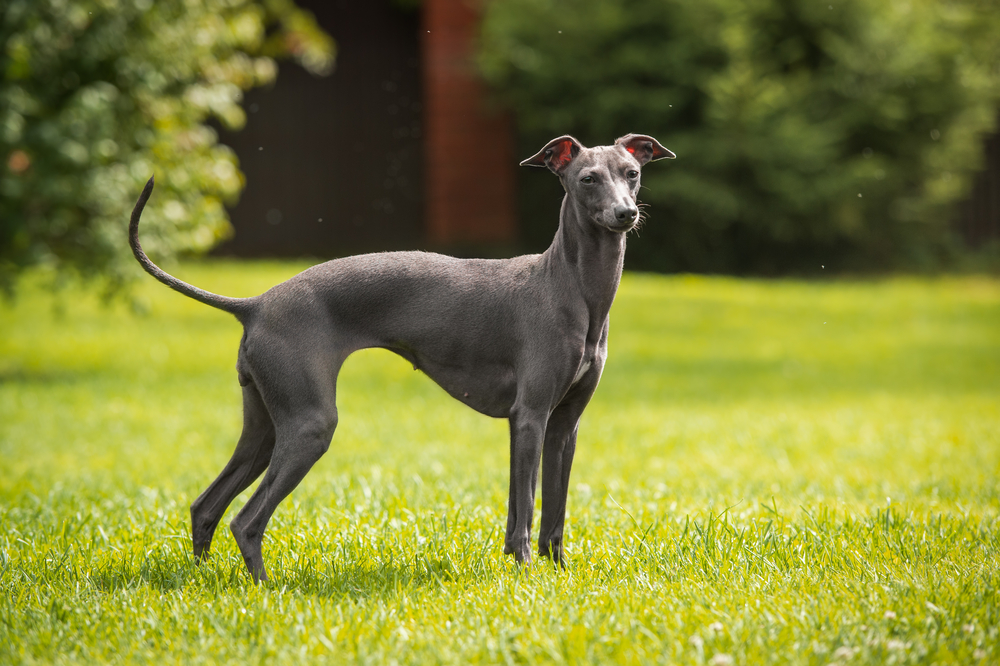
| Origin: | Italy |
| Lifespan: | 14–15 years |
| Height: | 13–15 inches |
Italian Greyhounds are sleek and elegant. They’re very low-maintenance, content with only short walks and indoor playtime. They tend to get bursts of energy and then rest for long periods. Expect some zoomies, but they typically need less exercise than you’d expect.
They are the smallest sighthound, and they look and act similarly to a Greyhound in almost every way besides their size.
9. Havanese
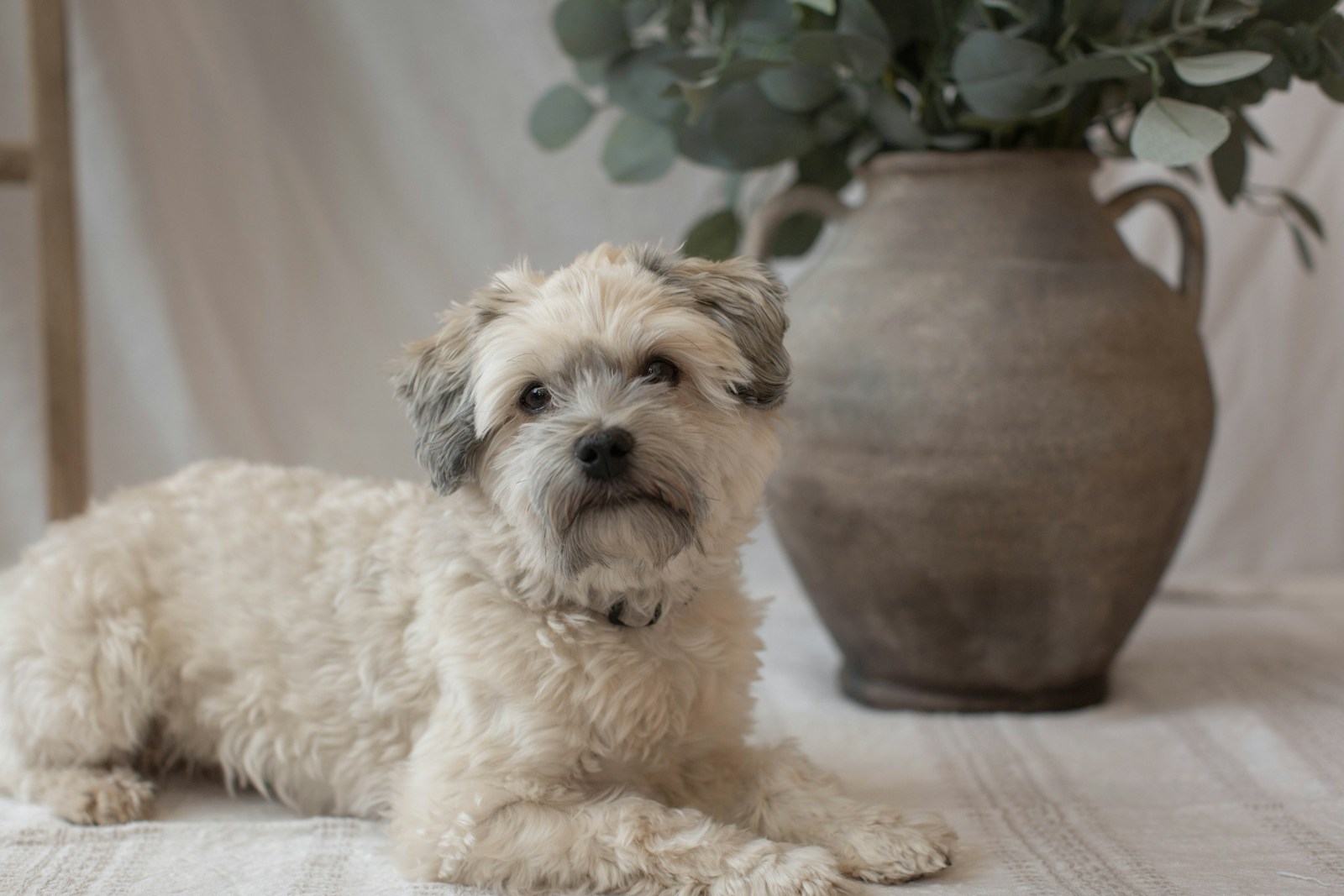
| Origin: | Cuba |
| Lifespan: | 14–16 years |
| Height: | 8–9 inches |
Havanese are smaller dogs that are bred solely as companions. They’re very sweet and affectionate, bonding closely with their humans. Plus, they’re even trainable and tend to go with the flow. They’re the perfect option for many city dwellers.
Plus, these dogs aren’t prone to the numerous health problems other breeds tend to be.
10. Maltese
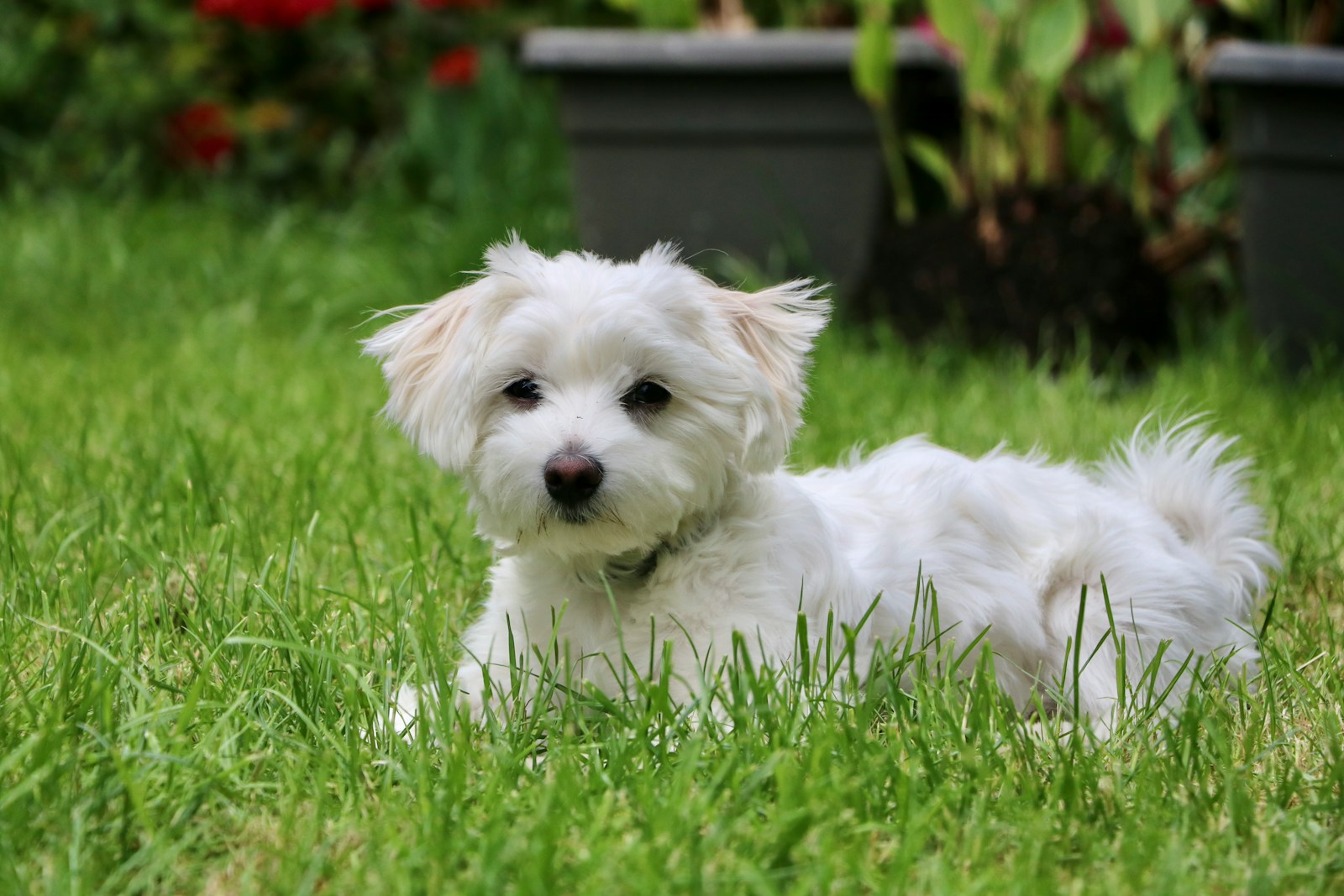
| Origin: | Mediterranean |
| Lifespan: | 12–15 years |
| Height: | 8–9 inches |
Maltese are tiny pups that are incredibly playful and affectionate. They’re relatively inactive indoors and tend to spend much of the day lying around. However, they do enjoy short walks and indoor playtime. Their low-energy needs make them perfect for apartment dwellers.
That said, they do require a lot of grooming. You must get them trimmed short by a professional or brush them daily.
11. Yorkshire Terrier
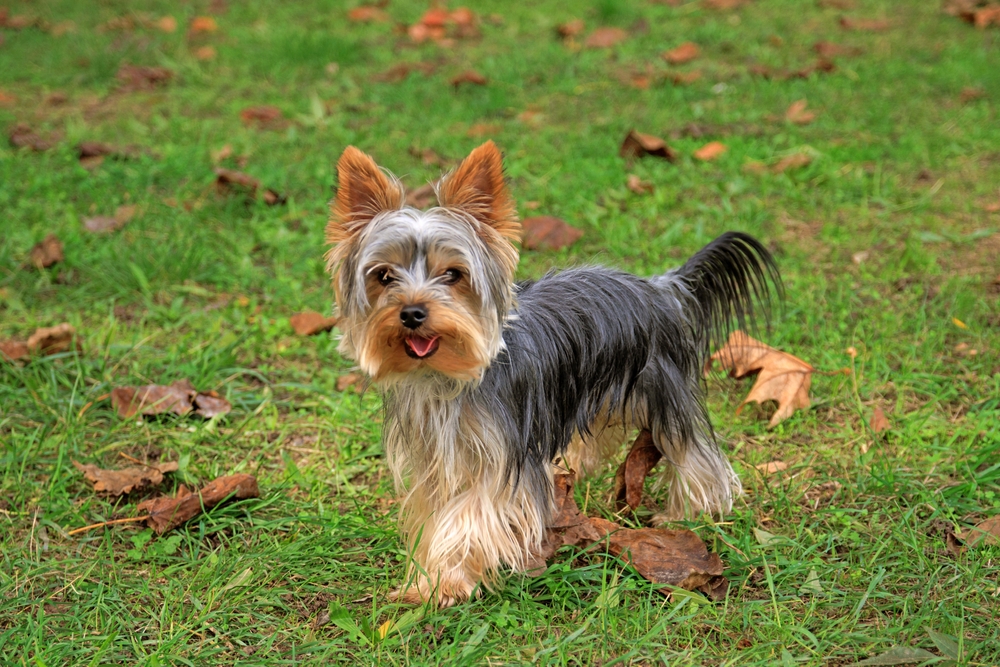
| Origin: | England |
| Lifespan: | 13–16 years |
| Height: | 8–9 inches |
Yorkies are commonly described as “personality dogs.” They have giant personalities in relatively small bodies. They love their people and spend much of their time cuddling. They don’t require much exercise, and most do just fine with indoor playing. In some cases, you may not even need to walk them.
Their long coats do require some grooming, though.
12. Chihuahua
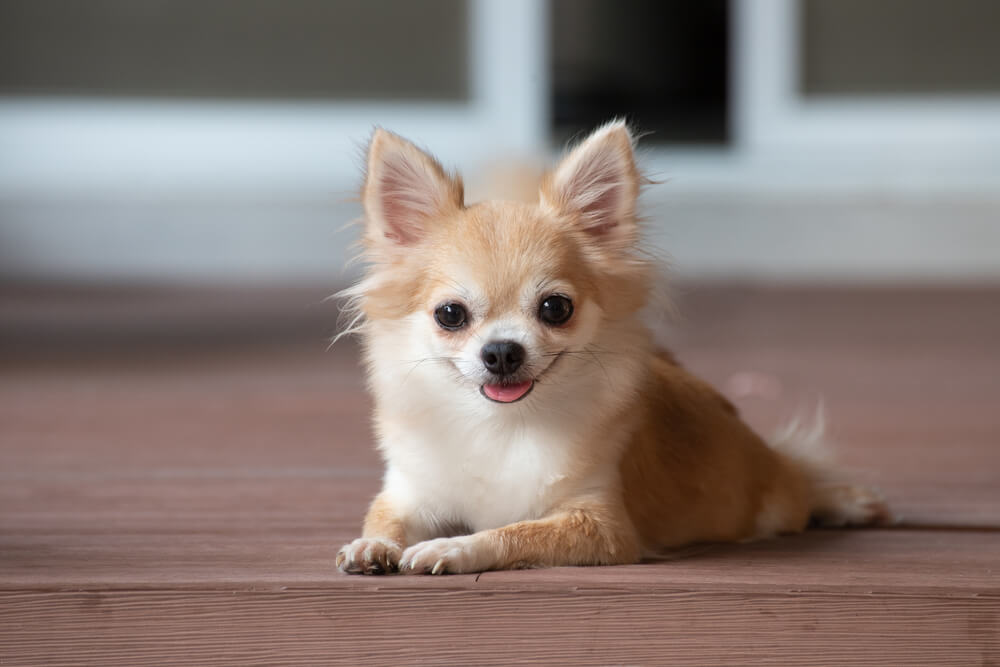
| Origin: | Mexico |
| Lifespan: | 15–20 years |
| Height: | 6–8 inches |
Chihuahuas are the smallest dog breed, so it only makes sense that they would work well in the city. They’re very loyal and affectionate. However, they also require plenty of socialization to ensure they build confidence. Otherwise, they can be fearful and even aggressive as adults.
They’re relatively inactive, and their smaller size makes it very easy for them to enjoy playtime and walks. We highly recommend them for those with smaller spaces, thanks to their smaller size.
13. Pekingese
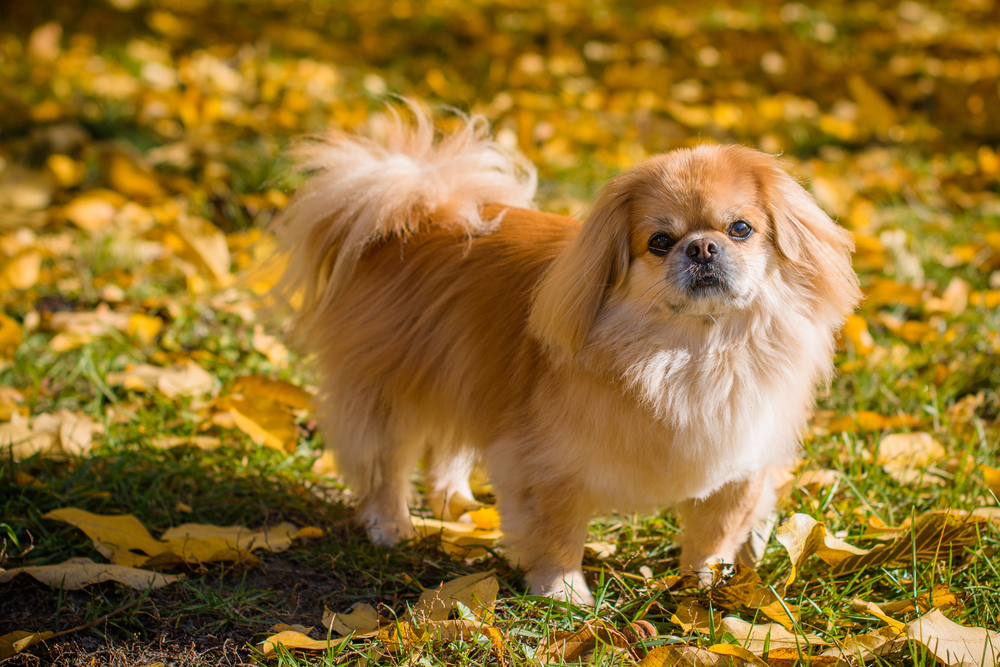
| Origin: | China |
| Lifespan: | 12–15 years |
| Height: | 8–9 inches |
Pekingese aren’t as common as other breeds. However, they are small and relatively inactive. They need a short walk each day, and many do fine with playtime only if you have a longer hallway. They do require lots of grooming.
However, they also work better for those with full working schedules. They’re independent and aren’t as prone to separation anxiety as other breeds.
14. Dachshunds

| Origin: | Germany |
| Lifespan: | 12–16 years |
| Height: | 8–9 inches |
Dachshunds are smaller dogs that don’t fit in the usual toy dog category. They were bred to be hunting dogs, and they act like it. If you want a dog that will do more than lay around and cuddle all day, they are a great choice.
These dogs require more exercise than other breeds due to their history. Their longer backs are also prone to health issues, so you have to be careful with stairs (a potential problem in the city).
15. Westies
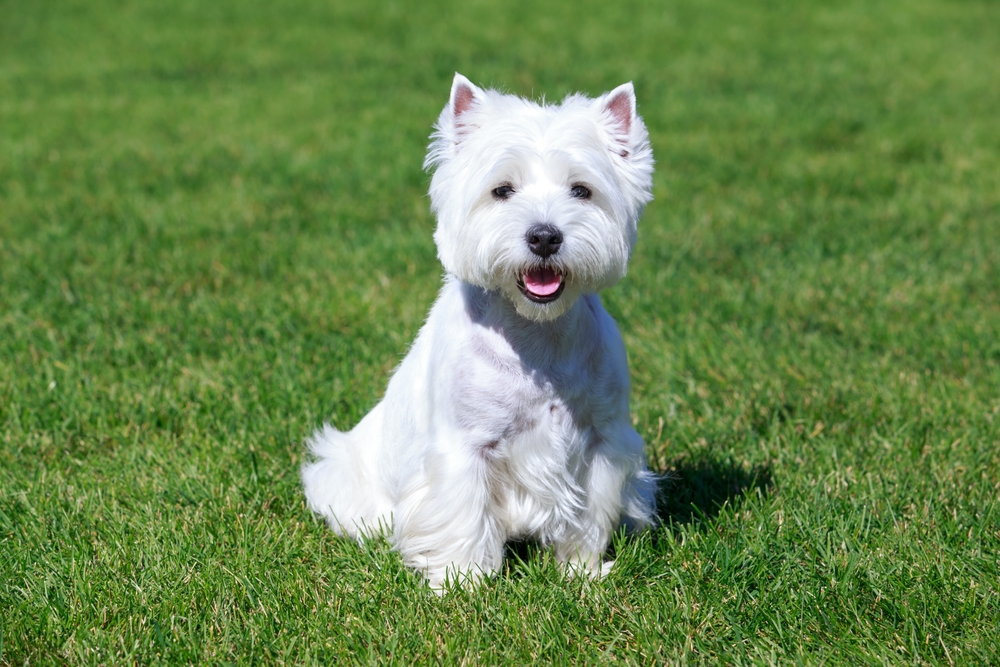
| Origin: | Scotland |
| Lifespan: | 12–16 years |
| Height: | 10–11 inches |
West Highland White Terriers are not your usual city dog. They’re small and athletic, requiring more exercise than most dogs on this list. However, if you’re looking for a more active dog, they’re a great choice. Their smaller size makes them easy to fit into a small apartment, but they have surprisingly high endurance.
These dogs don’t require tons of grooming despite their white coat. They’re exceptionally hardy dogs, making them a great option for those with children.
16. Affenpinscher
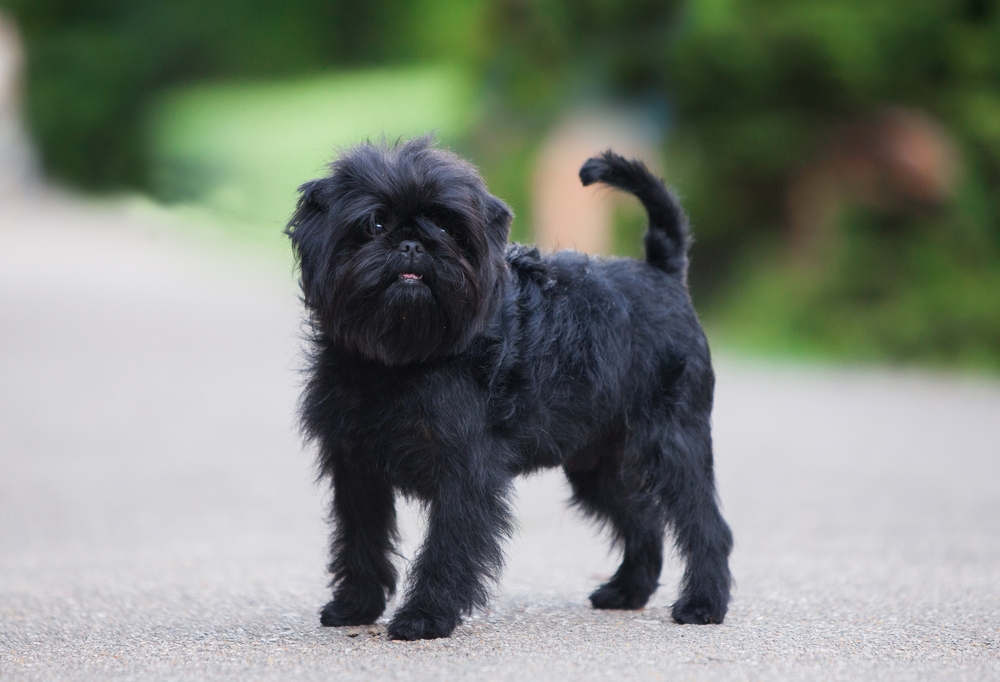
| Origin: | Germany |
| Lifespan: | 14–16 years |
| Height: | 10–11 inches |
These dogs are often described as “monkey-faced,” and it isn’t hard to see why! They’re full of personality and act a lot like other terriers. Expect lots of energetic laps around your house and probably some barking, too. However, with enough exercise, they can be calm enough to behave in a city. Their smaller size makes it pretty easy to meet that exercise need, too.
If you want an interesting, different dog, the Affenpinscher can be a solid option.
17. Cairn Terrier
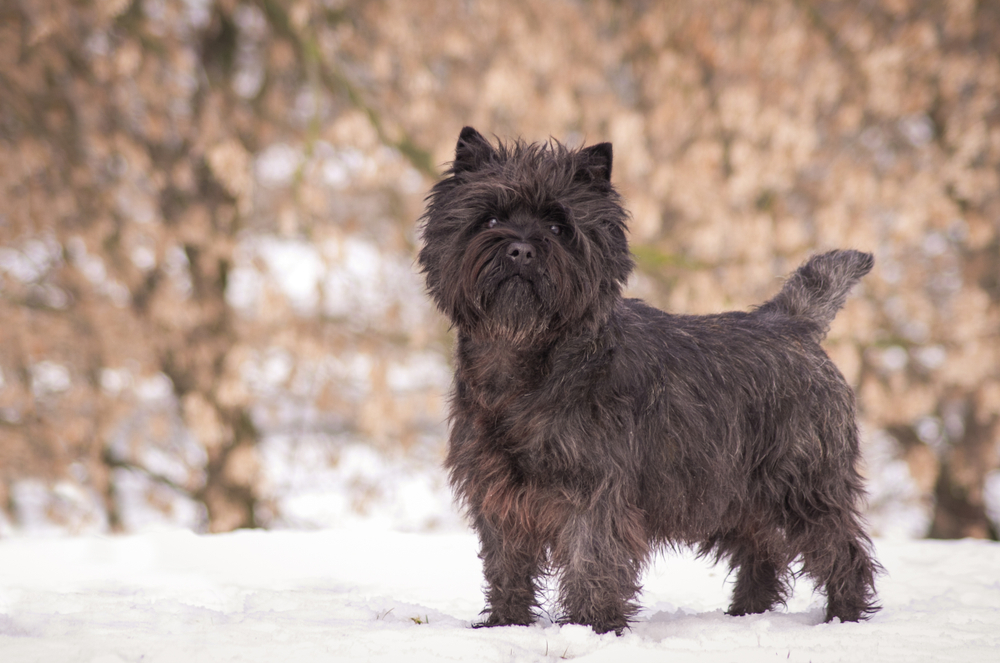
| Origin: | Scotland |
| Lifespan: | 12–15 years |
| Height: | 10–14 inches |
Like many terriers, these dogs are smaller. However, they are also pretty energetic. We recommend them for those who already like to exercise themselves. They love to go on daily walks and play, but they also love to snuggle. Their scruffy fur is absolutely adorable and requires very little maintenance, too.
Where these dogs really stand out is their adaptability. When socialized properly, it takes a lot to knock them down. They love everyone and tend to go with the flow.
18. Miniature Schnauzer
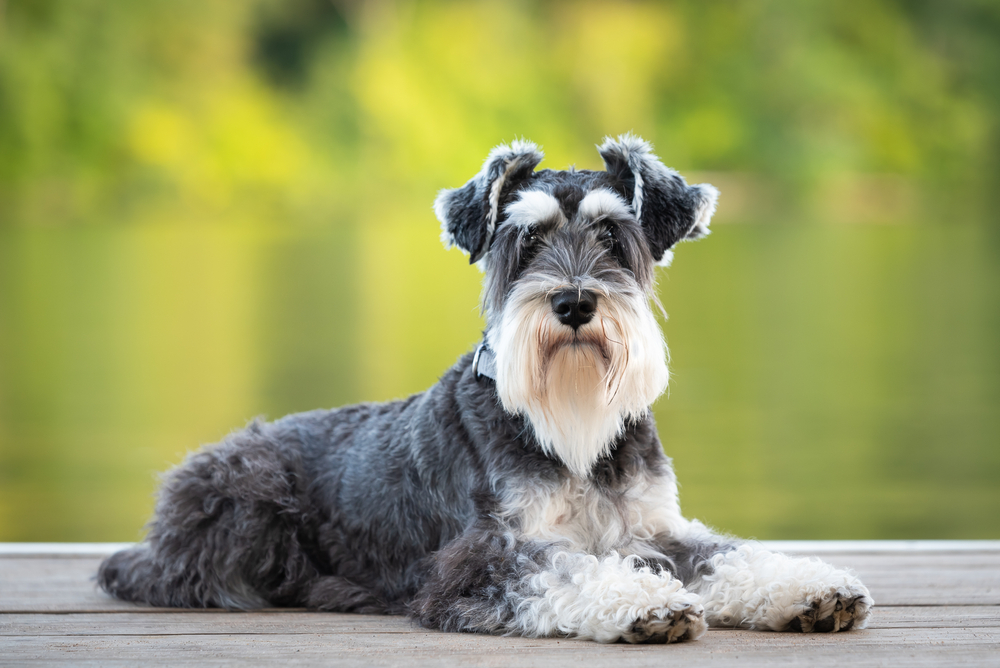
| Origin: | Germany |
| Lifespan: | 12–15 years |
| Height: | 12–14 inches |
These small Schnauzers are intelligent and easy to train. These traits make them a good choice for some families. However, they are energetic and require at least two daily walks (if not some extra playtime, too). We recommend them primarily for those who are active themselves.
Schnauzers can be aloof (or even territorial) against strangers, which isn’t a great trait for the city. Therefore, socializing them at a young age is necessary. Be sure to purchase from a breeder who prioritizes temperament.
19. Beagle
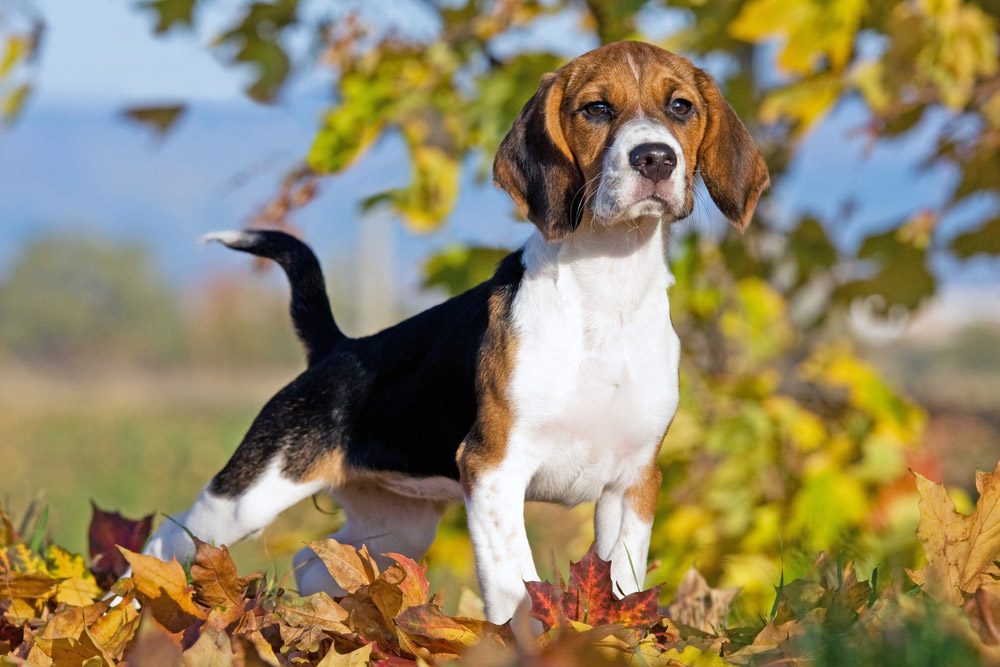
| Origin: | United Kingdom |
| Lifespan: | 10–15 years |
| Height: | 13–15 inches |
You may think of Beagles as outdoorsy dogs, but you couldn’t be more wrong. They’re very friendly with everyone, including dogs and people. They love to follow their nose, and there won’t be a shortage of things for them to smell in the city. However, you do need to keep them on a leash at all times.
These dogs can be quite vocal, but they aren’t necessarily the loudest dogs. With proper training, they can live fine in an apartment.

Final Thoughts
When choosing a dog for city living, it can be tempting to choose them based on appearance alone. While you should choose a dog that you like, you also need to consider how that dog fits into your lifestyle. Some dogs may fit better than others. Consider how much exercise you have time for, your work schedule, and experience owning dogs.
You should also consider exactly what kind of city lifestyle you live. Do you have a small house with a yard? Or do you live in an apartment? Not every city is the same, and not every family in the city is the same. Therefore, you’ll need to consider what dog is best for your particular situation.
Featured Image Credit: hedgehog94, Shutterstock
Contents
- What Makes a Dog Breed Good for City Living?
- The 19 Best Dog Breeds for City Living
- 1. French Bulldogs
- 2. Bichon Frise
- 3. Cavalier King Charles Spaniel
- 4. Boston Terrier
- 5. Pug
- 6. Shih Tzu
- 7. Brussels Griffon
- 8. Italian Greyhound
- 9. Havanese
- 10. Maltese
- 11. Yorkshire Terrier
- 12. Chihuahua
- 13. Pekingese
- 14. Dachshunds
- 15. Westies
- 16. Affenpinscher
- 17. Cairn Terrier
- 18. Miniature Schnauzer
- 19. Beagle
- Final Thoughts

